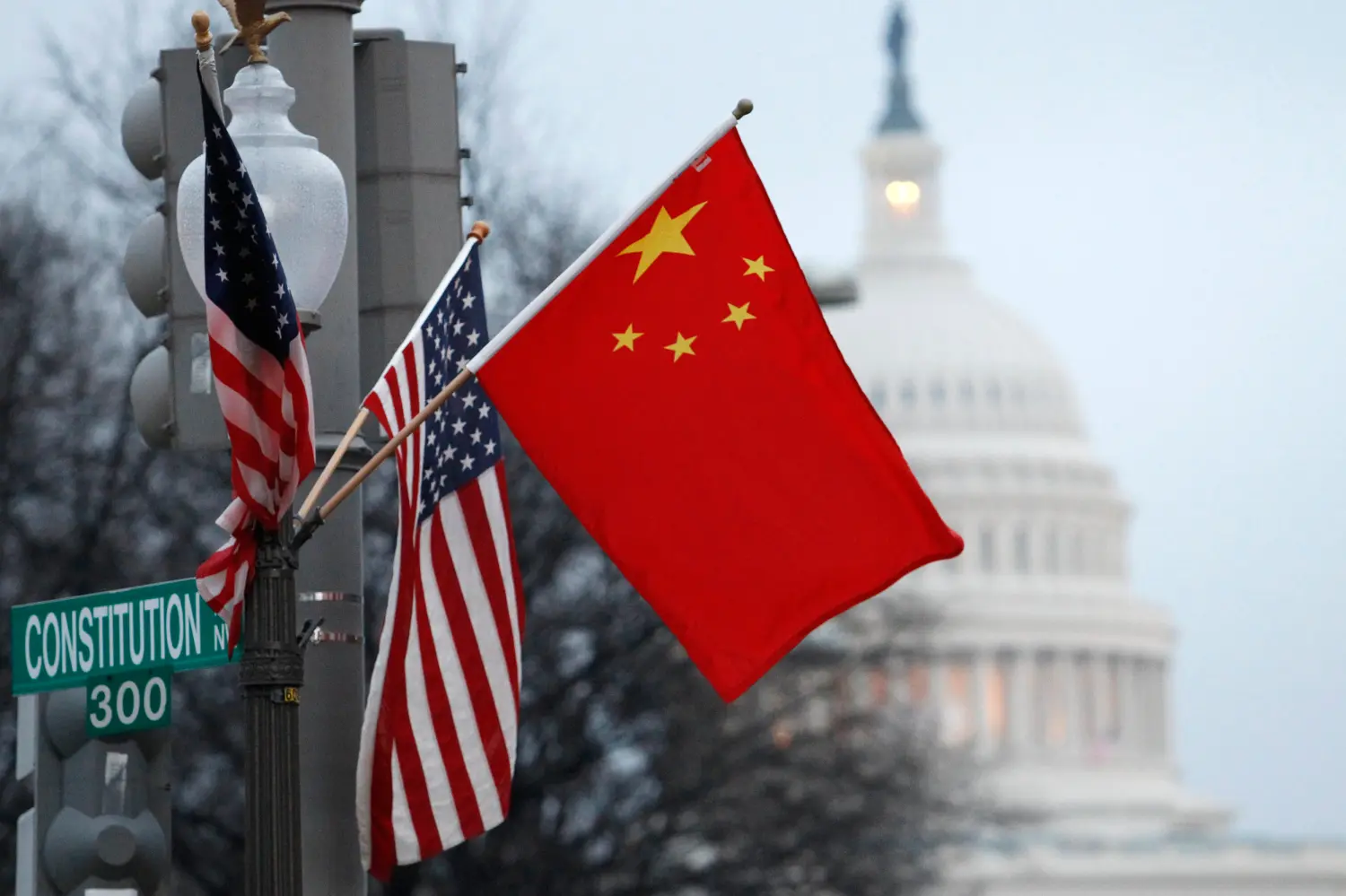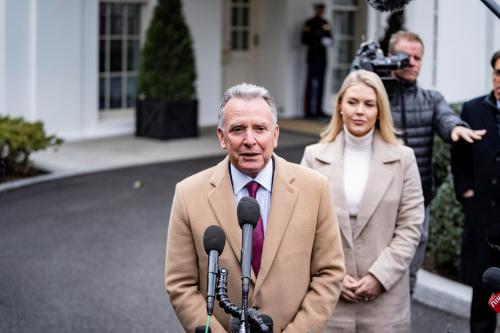In recent years, U.S.-China relations have grown increasingly rivalrous. The incoming administration will inherit a bilateral relationship in which areas of confrontation have intensified, areas of cooperation have shrunk, and the capacity of both countries to solve problems or manage competing interests has atrophied.
To address these challenges, the incoming administration will need to develop new thinking on how most effectively to address the myriad challenges and opportunities of the U.S.-China relationship. Whether for strengthening coordination with allies on China, addressing security challenges, or advancing American interests in the areas of economics, technology, and rule of law, fresh ideas will be needed to adapt American policy to meet the competitive and complex nature of U.S.-China relations.
The Paul Tsai China Center at Yale Law School, directed by Paul Gewirtz, and the John L. Thornton China Center at Brookings, directed by Cheng Li, have drawn upon the expertise and experiences of their scholars and other outside experts to compile a monograph geared toward providing policy recommendations for the next administration. Edited by Ryan Hass, Ryan McElveen, and Robert D. Williams, the monograph offers array of affirmative and pragmatic proposals for how the United States should adapt its policy toward China to respond to current realities in a manner that best protects and promotes America’s security, prosperity, interests, and values.
Meeting the China challenge
A strategic competitor, not an enemyAuthors: Jeffrey A. Bader
Jeffrey A. Bader provides a framework for understanding the current state of the U.S.-China relationship.
Downloads:
Avoiding three traps in confronting China’s party-state
Authors: Cheng Li
Cheng Li identifies three traps that the next administration should avoid in its conception and execution of a coherent China policy.
Downloads:
Designing a new diplomatic framework for dealing with China
Authors: Ryan Hass
Ryan Hass encourages the next administration to settle on a pace and level of diplomatic interaction with Chinese leaders that is reflective of — or not in conflict with — the views of the American public and of American allies and partners on China.
Downloads:
Working with our (European) allies
Authors: Paul Gewirtz
Paul Gewirtz identifies five promising areas for collaboration with European allies: economic issues, technology issues, human rights, reinvigorating the international system, and climate change.
Downloads:
Developing a new US approach to China and COVID-19
Authors: Thomas J. Christensen
Thomas J. Christensen notes that the failure of Washington and Beijing to cooperate during the COVID-19 crisis has increased the suffering of the Chinese and American populations and urges a new U.S. administration to take steps to adjust its approach.
Downloads:
Rebooting US-China climate engagement
Authors: Todd Stern
Todd Stern observes that reviving climate coordination will depend both upon getting the mix of competition and collaboration right in the overall relationship and upon the extent to which both countries are prepared to dramatically ramp up their climate action.
Downloads:
Getting human rights right
Consistency, patience, multilateralism, and setting a good exampleAuthors: Andrew Nathan
Andrew J. Nathan argues that human rights have grown in importance in the U.S.-China relationship and that U.S. policy on China must be updated to demonstrate America’s strong, consistent, and patient support for Chinese human rights defenders and change advocates.
Downloads:
Evolving the US base structure in the Indo-Pacific
Authors: Michael E. O’Hanlon
Michael E. O’Hanlon argues that the next administration should be deliberate and methodical about making any adjustments to U.S. force posture in Asia in response to China’s expansion in military capabilities.
Downloads:
Averting conflict in the South China Sea
Steps to restore rules and restraintAuthors: Susan A. Thornton
Susan A. Thornton proposes a “cooperation spiral” that could lead China and the United States, together with ASEAN South China Sea claimants, to restore trust and reestablish law, rules, and restraint in this vital waterway.
Downloads:
Competing with China in Southeast Asia
The economic imperativeAuthors: Jonathan Stromseth
Jonathan Stromseth argues that Washington needs to improve its economic game in Southeast Asia by operationalizing infrastructure coordination with allies and partners, including Japan, Australia, and Singapore.
Downloads:
Contending on the periphery
Taiwan and Hong KongAuthors: Richard C. Bush
Richard C. Bush argues that the next U.S. administration will face decisions regarding whether to change policy toward Taiwan and Hong Kong in order to secure its interests.
Downloads:
Testing the possibilities of renewed cooperation with China on North Korea Policy
Authors: Jonathan D. Pollack
Jonathan D. Pollack concludes that the Trump administration’s failure to achieve any of its declared denuclearization objectives requires a careful reassessment of credible policy goals, the mechanisms needed to advance them, and steps to be avoided.
Downloads:
Improving risk reduction and crisis management in US-China relations
Authors: Rush Doshi
Rush Doshi argues that U.S.-China crisis management and risk reduction should be a point of emphasis for the next U.S. administration.
Downloads:
Forging an alternative economic strategy for dealing with China
Authors: David Dollar
David Dollar calls on the next administration to end the current “managed trade” approach to the U.S. economic relationship with China.
Downloads:
Crafting a multilateral technology and cybersecurity policy
Authors: Robert D. Williams
Robert D. Williams argues the U.S. should seek to protect American intellectual property and strategic technologies while sustaining and strengthening the innovation ecosystem that makes those technologies possible, while upholding American values of human rights, democracy, and rule of law.
Downloads:
Addressing the data security risks of US-China technology entanglement
Authors: Samm Sacks
Samm Sacks argues that U.S.-China technology interdependence creates a suite of challenges for cross-border data flows, data privacy, and data security that extend beyond the traditional risks of cyber espionage and protecting intellectual property.
Downloads:
Revitalizing law and governance collaboration with China
Authors: Jamie P. Horsley
Jamie P. Horsley urges the next administration to strengthen official U.S.-China legal cooperation to support China’s efforts to establish rule of law and good governance.
Downloads:
The Brookings Institution is committed to quality, independence, and impact.
We are supported by a diverse array of funders. In line with our values and policies, each Brookings publication represents the sole views of its author(s).





